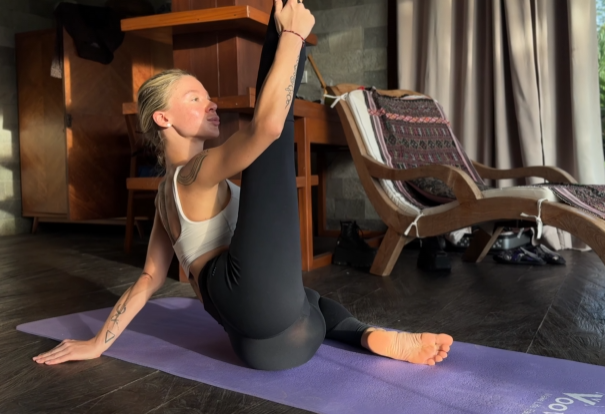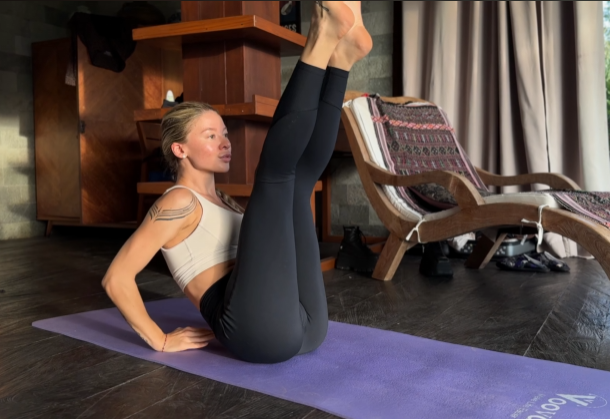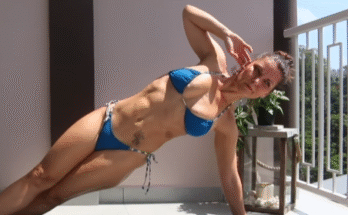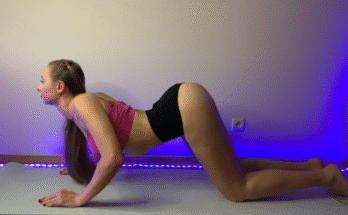
A full-body stretching session is one of the simplest, gentlest, and most effective ways to reconnect with your body, release deep tension, and expand your overall flexibility. In a world that keeps pulling us in every direction—work demands, family responsibilities, and the constant buzz of digital life—a relaxing routine can feel like a luxury. But stretching is more than just a feel-good moment; it is a practice that nourishes the mind, enhances physical mobility, and supports long-term wellness. This 1000-word guide will walk you through a calming, restorative, and deeply fulfilling full-body routine designed to unlock tightness and welcome more freedom into your frame.
Why Stretching Matters
Stretching is not only about improving flexibility; it also helps maintain healthy joints, promotes circulation, and reduces stress. When muscles remain tight for long periods, the body becomes imbalanced, increasing the risk of injury or chronic discomfort. A consistent stretching practice allows your muscles to elongate, your joints to move more easily, and your nervous system to relax. It becomes a mindful escape—a ritual where your breath, your body, and your awareness fall into harmony.
This relaxing routine is designed for anyone: beginners seeking gentle openness, active individuals needing recovery, or anyone craving a moment of peace. You don’t need special equipment—just a mat or soft surface and an open mind.
Begin With Stillness
Start your session by sitting comfortably, either cross-legged or kneeling. Close your eyes for a moment and take a slow inhale through the nose. Exhale softly through the mouth. Feel your body settling. Let the weight of your day drift away. This initial grounding phase is essential—it signals to your body that it is safe to relax.
Spend a minute doing simple neck circles, allowing your head to roll gently from shoulder to shoulder. Avoid forcing the movement. Let gravity help you. Then lift your shoulders up toward your ears and release them down with a slow sigh. Each movement invites more softness into the body.
Upper-Body Opening

From a seated position, extend your arms wide like wings. Interlace your fingers in front of you, palms pushing forward, and gently round your spine. This stretch opens the upper back and shoulders, areas that often carry emotional and physical tension.
Next, reach your arms overhead and take a big inhale. As you exhale, lean to the right, lengthening the left side of your torso. Inhale back to center, then exhale to the left. Feel each breath creating space in your ribs, waist, and chest. Repeat this motion slowly, syncing breath with movement.
A wonderful shoulder release follows: Bring your right arm across your chest and gently hug it with your left arm. Hold for several deep breaths, feeling the stretch travel from the shoulder to the upper back. Switch sides. This simple posture improves mobility and releases tension that builds from working at a desk, driving, or carrying heavy bags.
Gentle Spine Awakening
Move onto your hands and knees in tabletop position. Begin slow cat-cow motions—arching your spine as you inhale, rounding it deeply as you exhale. This classic stretch awakens flexibility through the spine, lubricates the joints, and massages the internal organs. Take your time. Let each breath guide the movement.
Then, widen your knees and sink back into Child’s Pose. Extend your arms forward. Melt your chest down. Feel your body surrender. This pose calms the mind, stretches the spine, and softens the hips. Breathe deeply into your lower back. Stay here for several slow breaths before rising.
Lower-Body Release
Step your right foot forward into a low lunge. Keep your left knee on the ground, and let your hips gently sink forward. This stretch targets the hip flexors, an area that becomes tight from sitting for long periods. Avoid forcing the stretch; allow it to unfold gradually.
For a deeper stretch, lift your arms overhead and gently arch your back. Breathe into the expansiveness across your torso and hips. Hold the posture for 20–30 seconds, then switch legs. Notice any differences between sides—tightness, openness, or tenderness. Each sensation is simply information, not judgment.
Transition into a hamstring stretch by straightening your front leg and flexing your foot toward your face. Hinge forward with a long spine, keeping your breath smooth. This stretch lengthens the entire back of the leg, improving flexibility and preventing injury.
Deep Hip and Glute Opening

Return to a seated position for a figure-four stretch. Cross your right ankle over your left knee and gently pull your legs toward your chest. You will feel a deep opening in the glutes and outer hip. These muscles play a major role in posture and stability, so releasing them brings tremendous relief.
Switch sides after several breaths, letting the stretch soothe areas that may feel tight or overworked.
Next, come into a seated butterfly position. Bring the soles of your feet together, letting your knees fall outward. Hold your feet lightly and take a gentle fold forward. The more your hips relax, the closer your knees drift to the ground. Keep your breath slow and steady. This posture helps open the groin, inner thighs, and lower back.
Full-Body Extension
Lie down on your back. Stretch your arms overhead and point your toes forward in the opposite direction. This full-body extension lengthens everything from your shoulders to your ankles. Imagine your body as a long line of energy expanding with each inhale.
Draw your right knee toward your chest and circle your ankle to release tension in the lower leg. Then extend it upward toward the sky, holding behind your thigh or calf. You don’t need to straighten the leg completely. Simply breathe into the length. Switch sides.
Final Relaxation

End your routine with a gentle twist. Drop both knees to the right while keeping your shoulders grounded. Turn your head to the left. Allow the twist to wring out the spine and release tension in the low back. Switch sides after a few deep breaths.
Finally, stretch out completely and rest in Savasana—your arms relaxed, legs extended, eyes closed. Let every muscle surrender to the earth beneath you. Stay here for at least a minute, giving your body time to absorb the benefits of your practice.
Closing Thoughts
A full-body stretching session does more than increase flexibility. It soothes the mind, nurtures connection within the body, and restores energetic balance. With consistent practice, your movements become more fluid, your posture more open, and your mind more at peace.
This relaxing routine can be repeated daily or several times per week. What matters most is that you allow your body to move with intention and compassion. Stretching is a conversation with your physical self—a chance to listen, soften, and grow.
Take a deep breath. Carry this ease with you into the rest of your day.



